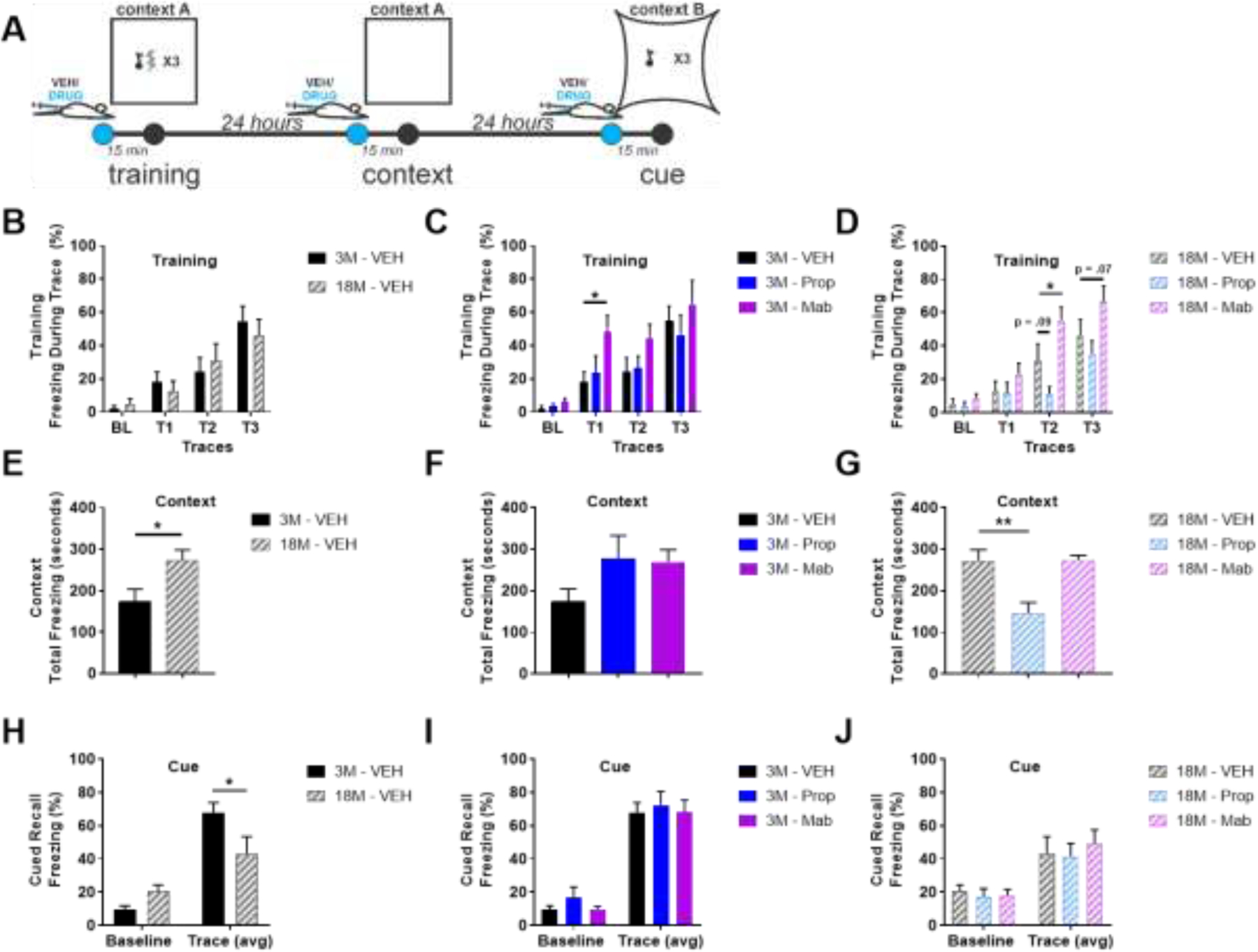Figure 11.

Young and old mice both learn to associate a tone with freezing behavior following tone-shock pairings, but old mice show greater freezing in response to context and less freezing response to cue when tested for recall. A) Fear conditioning experimental design. B-D) Training. B) 3 month (3M) and 18M mice learn to freeze in response to a tone paired with shock. C,D) Mabuterol enhances this freezing during training in both 3M and 18M mice and D) propranol impairs this freezing during training but only in 18M mice. E,F,G) Context. E) 18 M mice freeze more in response to re-exposure to context. F) Propranol and metoprolol increase freezing to context in 3M mice. G) Propranolol reduces freezing to context in 18 M mice. H,I,J) Cue. H) 3M mice freeze more in response to cue, I,J) with no effect of drug in either 3M or 18M. * indicates p < .05, ** p < .01; Dunnett’s after two-way ANOVA (B-D), t-test (E), Dunnett’s after one-way ANOVA (F-G) or Sidak’s posthoc after two-way ANOVA (H-J).
